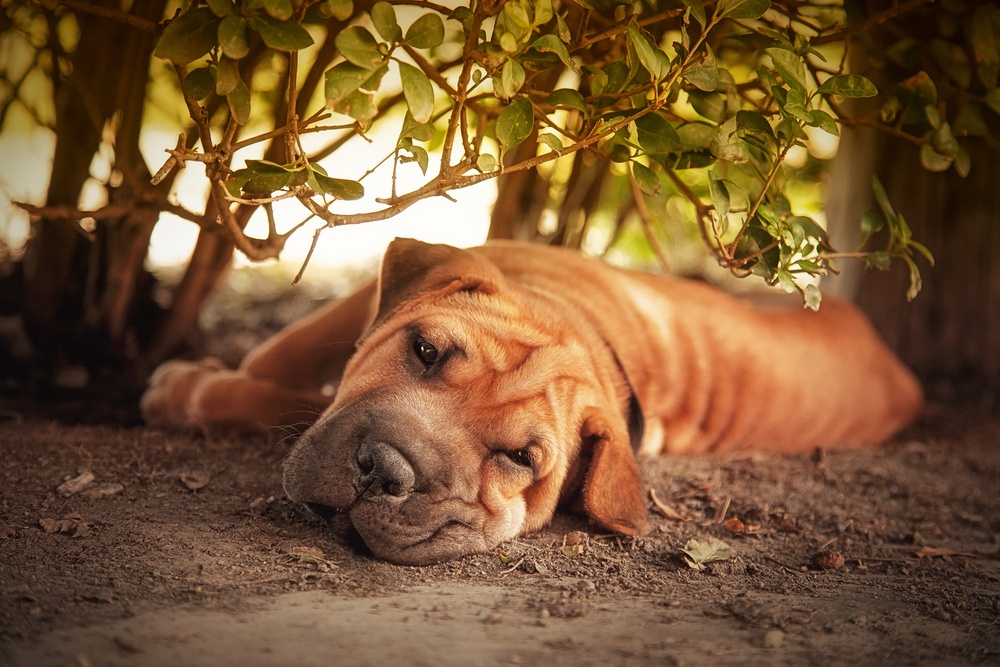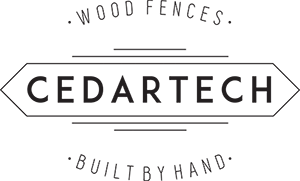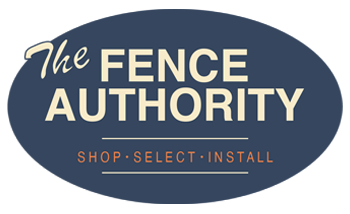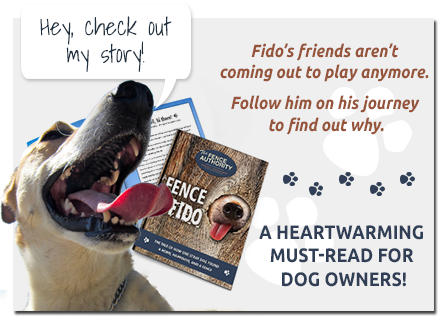Dogscaping: Creating a Dog-Friendly Backyard
Dogs are known as man’s best friend for a reason. You and your pup develop a tight bond over the years, and you probably share just about everything—from a refreshing ice cream cone on a hot day or that warm, cozy spot under the covers to lazy walks around the neighborhood or the joy of an aimless Sunday drive with the windows down.
What’s yours is his (as far as your dog is concerned, anyway) so why not make room to let your four legged friend share your outdoor space too?
This is about more than dog fences and doghouses. Let’s go over some of the ways you can create the perfect backyard for your precious pup.
Let’s talk about dogscaping!
 So, what in the world are we talking about? Dogscaping, or petscaping, puts a name to a style of outdoor living many doting dog owners may already be practicing. Think of it as the perfect blend of shared outdoor space for you and your dog. Your yard and landscaping will look polished and top-notch, and your furry family member will get safe, much needed exercise and stimulation in the fresh air.
So, what in the world are we talking about? Dogscaping, or petscaping, puts a name to a style of outdoor living many doting dog owners may already be practicing. Think of it as the perfect blend of shared outdoor space for you and your dog. Your yard and landscaping will look polished and top-notch, and your furry family member will get safe, much needed exercise and stimulation in the fresh air.
There are about as many ways to dogscape your yard as there are breeds of dogs (roughly 340, last time we checked), so your own creation should reflect both you and your dog’s unique preferences and needs. So how, exactly, can you accomplish this?
Get your dogscaping inspiration straight from…the dog’s mouth
You already have a good idea of what YOU want in your yard. Now, take some time to observe your pup outside and make note of his habits. Does he love running across the yard in a frenzy? Does he like making repeated attempts to dig his way to China? Or does he have a habit of grazing on the local greenery? Take heed of his preferences, and then get started!
Lay the groundwork: Planning the design of your dog friendly backyard
1. Plan around your dog’s regular routes
If your four legged companion has already laid out his preferred paths around the yard, don’t try to reroute his established habits. Instead, shape your landscape around his routes or the areas he frequently paces. Marking your dog’s path will also let you know which areas make the most sense for your pristine patio set or the decked out grill that gets center stage during barbeques.
Creating a dog run
Creating a dog run based on your dog’s path is one of the easiest ways you can start dogscaping. You can use flagstones, pavers, mulch, stone dust, or pea gravel to mark the course of the dog run, but make sure to weigh the pros and cons of each material first.
Stone dust is often used because it is inexpensive and low maintenance, but it could be rough on tender paws. Pea gravel is great in areas with high winds, but be mindful of the size of the gravel in relation to your pup’s paws, and note how often the path will be soaking in the sun (unless you want your dog to hone his skills at fire walking, which we do not recommend!) Mulch or wood chips can be used, too, (please see important note about mulch below) but be cautious of splinters, a breeding ground for fleas and your dog opting to use them as an impromptu chew toy.
2. Pick dog-proof or dog-friendly landscape features
There are countless options for what you can include in your yard for you and your dog. What you choose will depend on your budget, the space you have available, and what fits you and your pooch’s style. Some of the more popular elements to get you started include:
Fencing
If you don’t already have a fence lining the perimeter of your yard, this should be at the top of your list. There are many styles and types to choose from to fit your taste, and you’ll feel much better about relaxing in the sun with your dog knowing he can’t leave the safety of your yard.

Dog-safe outdoor water fountains
Who doesn’t love the relaxing sound of gurgling water? It’s an added perk that those outdoor fountains can also serve the dual purpose of quenching your pup’s thirst after a romp in the yard. There are outdoor water features made specifically for dogs, or you can make sure that whatever you choose has safe materials and the proper filtration, sterilization needed for drinking.
Shade
Believe it or not, your dog can be as vulnerable to sunburn as you are! Give your pup a place to get out of the shade—whether it’s under the cover of trees, or an outdoor dog house they can retreat to for some rest and quiet—make sure there are shade options available. This is especially important on hot days when your dog may be more susceptible to overheating.
 Dog friendly plants and flowers
Dog friendly plants and flowers
Your dog may not be as appreciative of your green thumb as you think he should be, so you need to be cautious about what you plant and how you plant it. For flowers, use raised beds or edge them in rocks, small shrubs, or garden fencing to keep them free from tramping or unauthorized grazing.
If you have your heart set on grass, stick with a variety that is known to be hardy and will have a better chance of standing up to foot traffic (we recommend looking into Buffalo grass, Kentucky bluegrass or Tall fescue).
If you want to be doubly smart about your greenery choices (and we know you do!) you can also opt for plants and flowers that your dog will enjoy, too.
Herbs like lavender, rosemary and mint will work to repel pests like fleas, and go great in tea or a savory dinner dish.
Urine resistant plants like the Euonymus Japonica (or the Japanese spindle tree) and the Burkwood Osmanthus will thrive even if your dog designates them as the occasional potty stop.
Nontoxic plants and flowers are great for dogs that may take nibbles from your outdoor décor. For flowers, look for pansies, roses, violets, marigolds or nasturtium. You can also plant blueberries, strawberries, and wheat or oat grass without worry.
3. Know and avoid common doggy dangers

Steer clear of harmful chemicals
Soil and fertilizer, herbicides, pesticides, and other weed killers can pose a serious threat to your dog’s health. If you do need to use chemicals for gardening or lawn upkeep, make sure they are somewhere Fido can’t access them or they are safe for pets.
Harmful Materials to Avoid:
Cocoa mulch
Cocoa mulch contains theobromine, the same ingredient that makes chocolate poisonous to your favorite pooch. Try stone dust, another common pathway material. It is inexpensive, low maintenance and reduces odors. Other options include gravel, shredded hardwood mulch, or woodchips.
Pool and garden chemicals
Chlorine especially can be harmful. Keep pets out of the pool with a pool fence or search for a nontoxic alternative if you have an aquatically inclined dog.
Beware of weed killers, fertilizers, herbicides and pesticides. If you’re not sure if something is safe, you can contact the manufacturer or refer to a list of common chemicals toxic to dogs.
Poisonous plants
Certain plants and vegetables may appear innocent in your garden, but your dog might be in trouble if he decides to treat them as a snack. Before you introduce new foliage or veggies to your yard, make sure they’ll do no harm. Common toxic flowers include Foxglove, Irises, Monkshood, and Lily of the Valley. Harmful vegetables include mushrooms, garlic, and tomatoes.
If your green thumb is at odds with your grazing-inclined dog, never fear! You can edge flower and plant beds with rocks, shrubs (not the pointy ones, of course!), or garden fencing to create a barrier. You can also consider raised beds or, if you’re feeling especially ambitious, a small greenhouse.
For a more complete reference list, check out the ASPCA’s printable list of toxic and non-toxic plants for dogs.
4. Give your dog space to call his own
After all the attention you put into making sure your pup can’t get into things, give yourself a break and consider creating a space that your dog CAN enjoy. You’re only limited by your own imagination, but here are some ideas to get you started!
Potty station
To us, this one is a no-brainer. Creating a specific spot for Fido to do his business will make cleanup easier for you, keep your yard looking great, and teach your dog the discipline needed to only use the space set aside for him.
Consider cement, which can absorb liquids and can be easily hosed off. Or, if you’d rather brighten up the space a bit more, artificial grass can add some color and still provide minimal mess and cleanup.
Digging pit

Got a dog with a mission to dig his way to China and only your pristine lawn stands in his way? Give him a special spot where he can dig to his heart’s content. It’s a win-win! Sand is a great (and less messy!) alternative to dirt to use.
Elevated platforms or viewing places
For the dogs that love to tower over their surroundings to keep a vigilant eye on everything, a designated viewing platform is a great addition. This can be a special spot on your deck, steps, a raised platform next to your fence (as long as he’s not a jumper!), or small viewing windows built into the fence at eye level. Your pooch can keep one eye on the mailman and you get the added bonus of a furry alarm system.
If you’re a dog owner, we don’t think it will take you long to fall in love with the idea of dogscaping. It goes without saying that Fido most likely already has his own seat in the living room, so why not give him some space of his own out back too?
What have you done to dog-scape your yard? Share pictures or let us know about the dogification of your back yard in the comments!
To order fence parts or schedule professional installation,
call 800-431-4303 or contact us online!






2 Comments
I really liked your idea to give your puppy a place to dig around in. My sister just moved into a bigger property and she is thinking about adopting a dog because of the more room that she has. She would love knowing this as she looks into a dog barrier fence.
Thanks for pointing out that pea gravel can be a great choice for a dog run. I think that gravel would be easy to work with that so it wouldn’t be hard to make a dog run by yourself. I also think that incorporating gravel elsewhere in your landscape would help give your entire yard a more cohesive look.